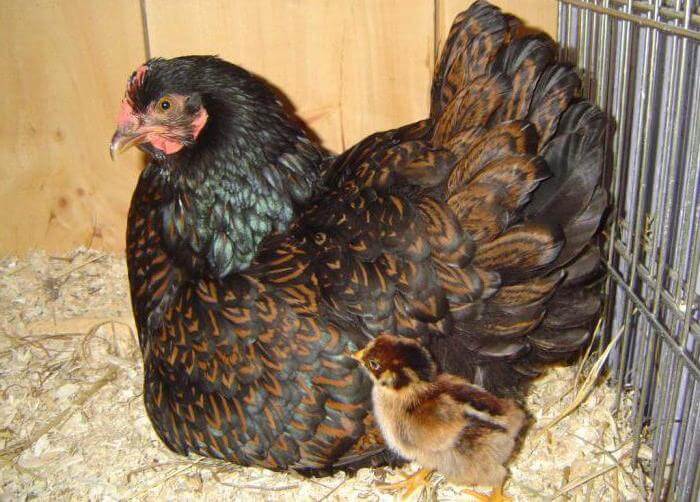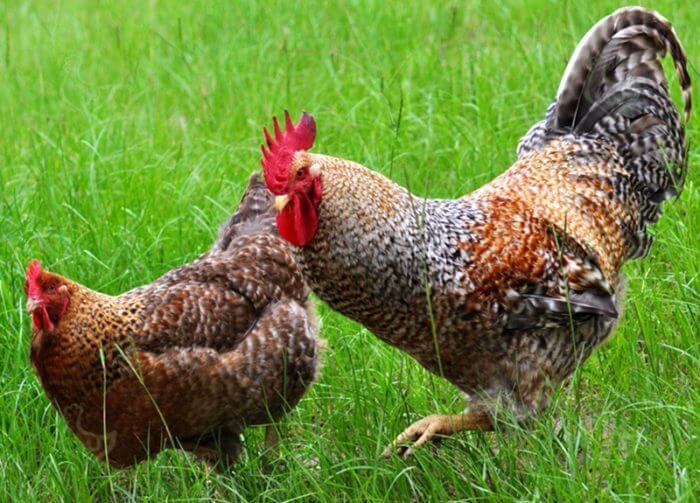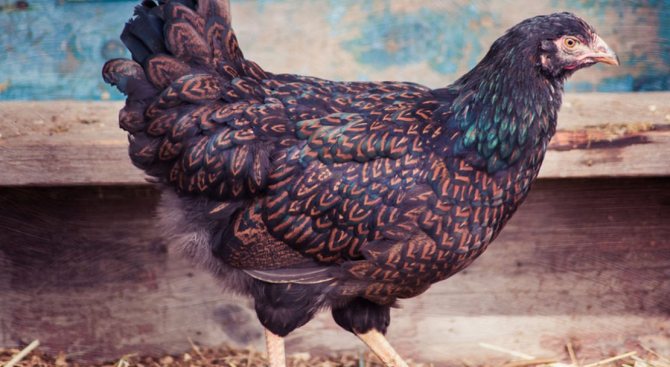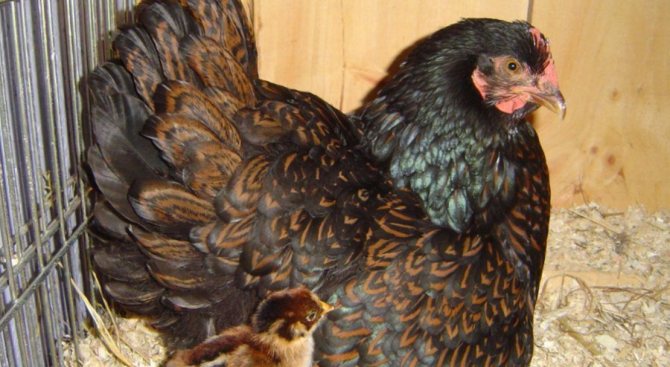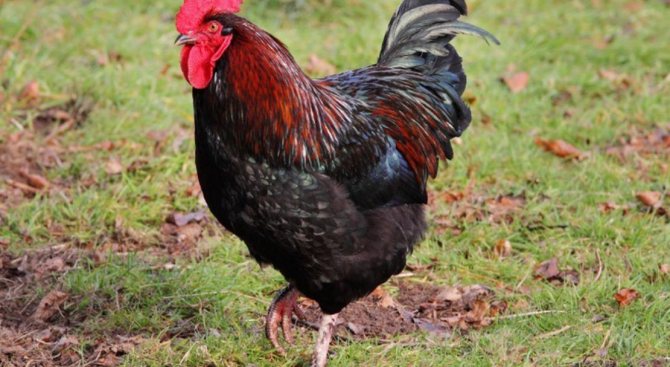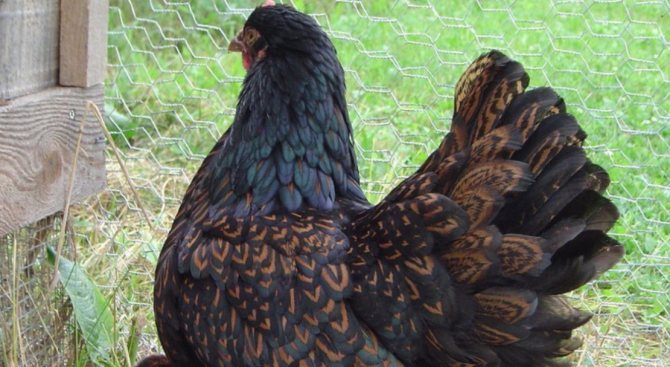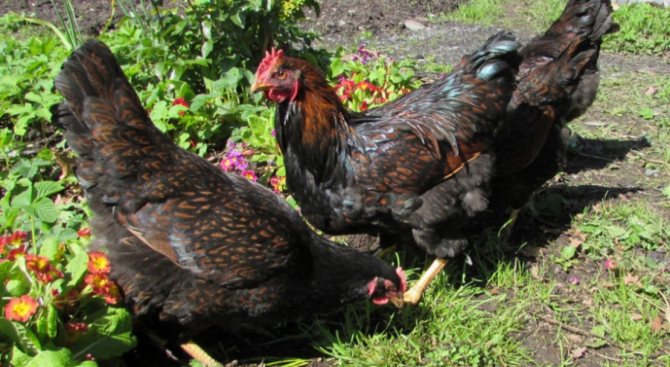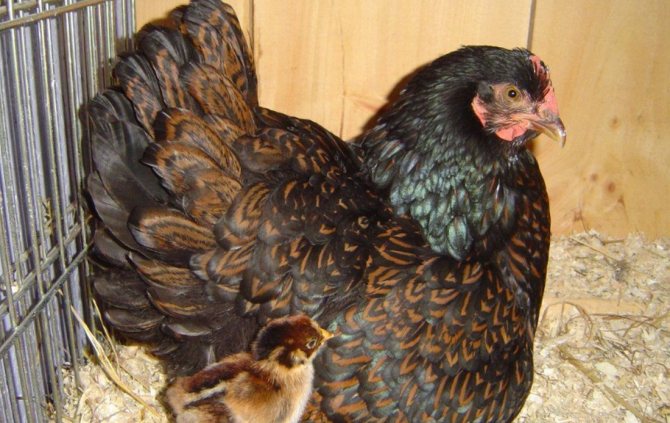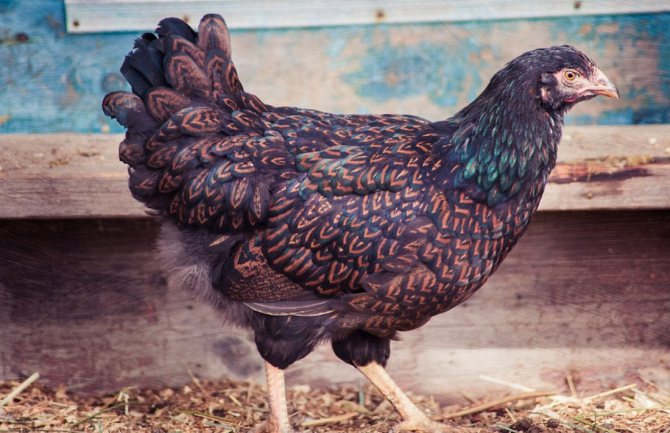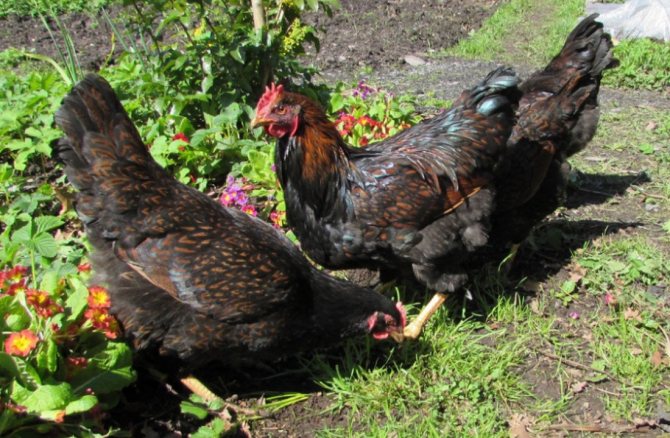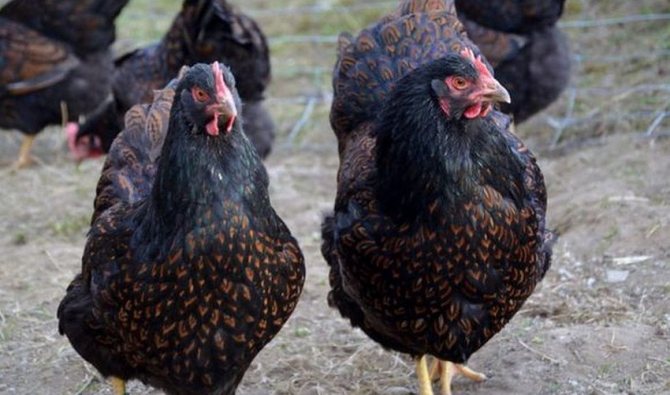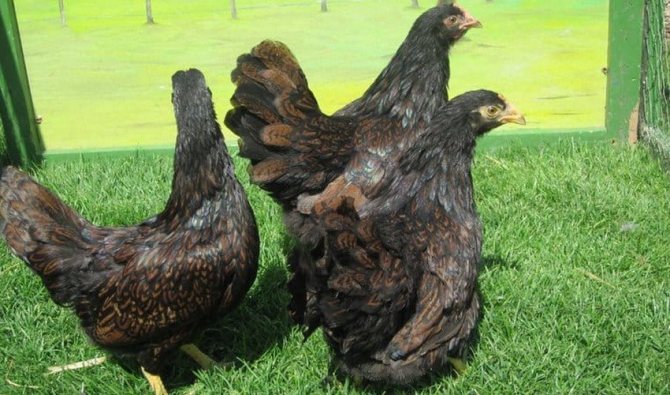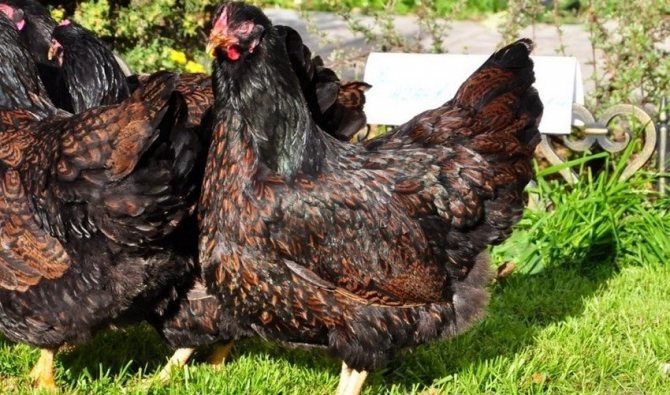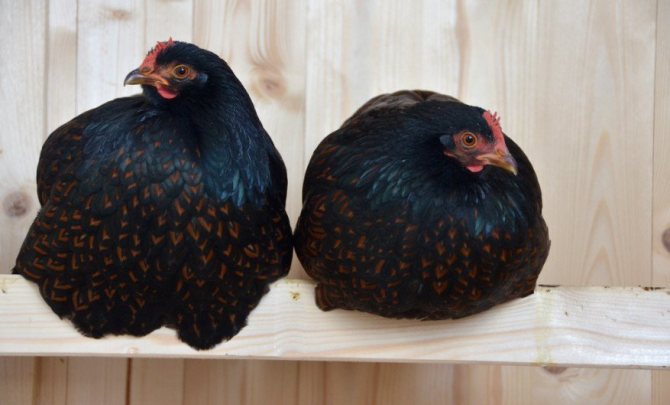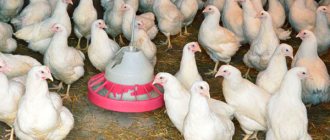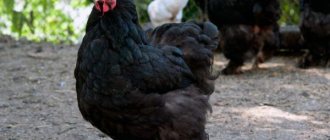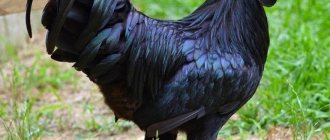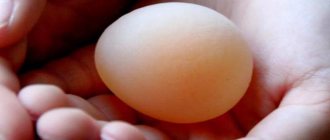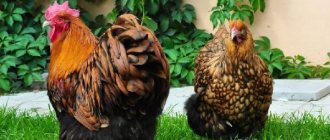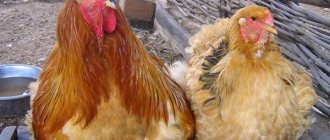Poultry »Chickens
0
1200
Article rating
The Barnevelder chicken breed was bred in Holland at the beginning of the 20th century. The original breeding goal was to obtain chocolate-shelled eggs, which were more expensive at the time and were very popular. The goal was never achieved: some of the hens produced terracotta eggs. But the chickens received a unique plumage with a double edging. The breed belongs to the meat-and-meat direction, well suited for breeding in small private farms.
Chickens Barnevelder
Background and origin
Breeders have been breeding the Barnevelder breed for almost two decades, starting in 1893. The goal of the experiment was to breed chickens that would lay chocolate-colored eggs.
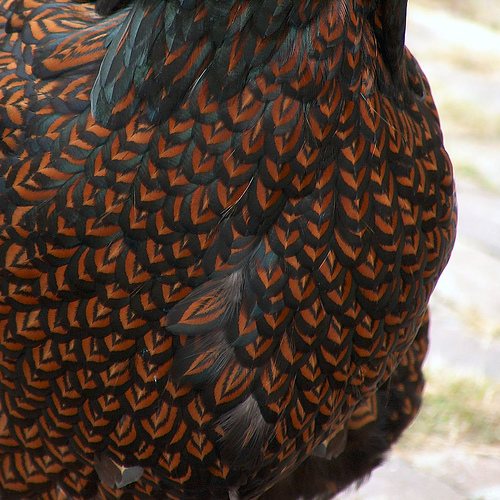
Origin
The Dutch breeders did not achieve the final goal, and in 1910 the standard was determined. The eggs got a terracotta color, and the birds got an unusual color, high meat productivity.


Derived from the local Barneveld Klush, and the fighting Indian representatives, the new breed of Barneveld chickens has become.
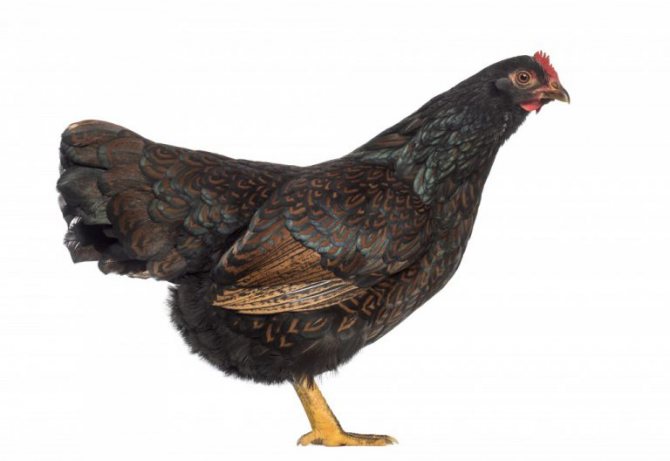

Breed colors
There are several types of chicken colors:
- The most popular color is brownish red with a double border.
- The black.
- Dark brown.
- Light colors: white, with light creamy or silvery colors.
Until now, new colors continue to appear. Instead of a brownish red hue, blue is often found. Not so long ago, chickens appeared in England with a silver-black color. Despite the appearance of new ones, the most common shade remains brown.


Appearance
According to the external description, the Barnevelder chicken breed looks majestic, with impressive dimensions. This is due to the wide chest and color of the bird, which cannot be compared with any other breed. Shiny feathers in red, brown, gray, blue and each with double edging.
Barnevelder chickens, rare in beauty and description, even come with a silver border. They were developed quite recently by an English breeder. Chicks of this breed can be immediately distinguished by their dark brown back and yellow breast.
Behind the plumage is a compact bird up to 2.7 kg, a rooster - 3.5 kg in weight. Small head without plumage. The wings are massive and long, but fit tightly to the body. Paws are deep yellow. The color of the eyes is red-brown.
To better understand the description of the Barnevelder chicken breed, you need to see photos of this outlandish bird:
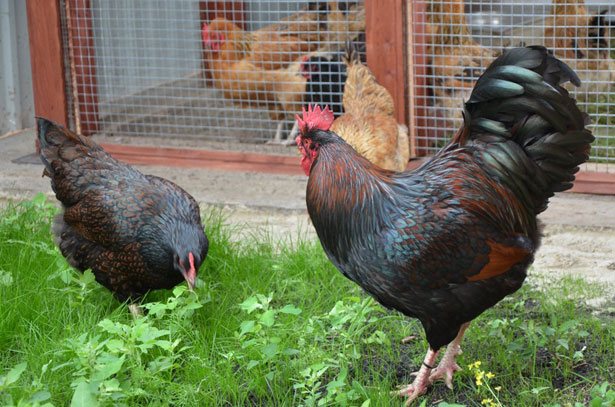

Photos of the Barnevelder chicken and rooster.


Photo of Barnevelder chickens. The beauty of their plumage is indescribable!
Temperament of chickens
Most owners find the Barnvelder breed quiet and even somewhat timid. The bird quickly gets used to people, differing in friendliness and tolerance even to children's pranks. Raised from a young age in the same yard, chickens will soon begin to follow their owners, accompanying them in household matters, vigilantly watching everything, and will definitely not get bored.
The hens are willing to hatch chickens and are very caring. Roosters prove themselves to be real fathers of the family, protecting both hens and chickens.
Bentamka Barnevelder
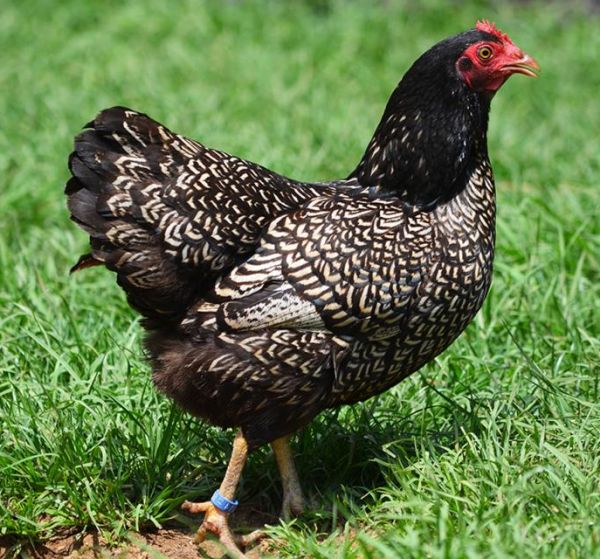

Character
According to the description of many poultry farmers, we can safely say that the Barnevelder breed is popular not only for its productivity, but also for its livable character with people.
Roosters do not throw themselves at children, but, on the contrary, are given into their hands. They do not organize fights among their fellows, everything goes according to diplomatic laws.
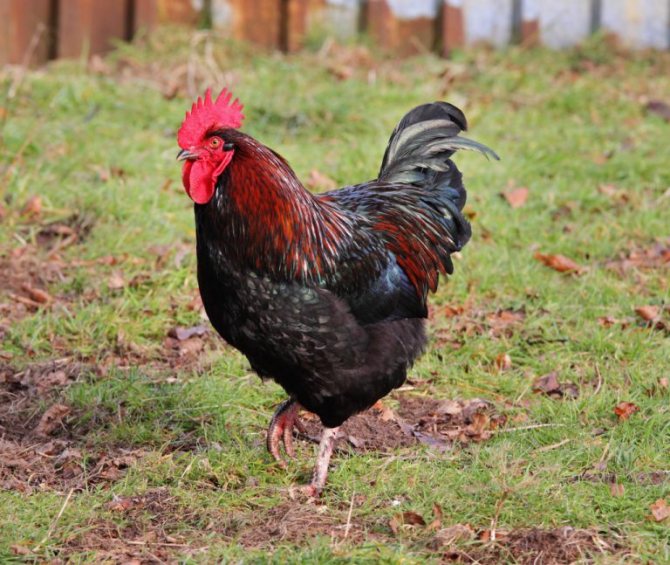

Photo of a Barnevelder rooster - a true handsome man!
The Barnevelder breed has a tendency to stick together. They run amicably around the yard in search of food.
Video: an overview of the Barnevelder chickens.
Testimonials
Basically, farmers who were lucky enough to become the owners of such interesting chickens speak positively about the breed. The hatching rate of the chicks is very high. They grow rapidly and actively. Chicks enjoy exploring the world, they are mobile and noisy. But with age, the chickens become more sedate. Most often, young animals behave friendly with livestock, but there are individuals who are pugnacious, and it is better to separate them from the general flock. In winter, during molting, many brood hens continue to lay, albeit in smaller numbers. Eggs during this period are of lower quality. They are smaller in size and the shells are lighter and thinner. Barnevelders tolerate our winters well, rarely get sick. Yes, it is quite difficult to find purebred specimens in Russia, there is a risk of buying a cross or the wrong breed. It is recommended to look for thoroughbreds among private farmers who breed rare foreign chicken breeds.
Features of caring for adult chickens and chickens, their breeding
In order for chickens to gain weight well, to have a high egg production, one should not only feed in a balanced way, but also create the right living conditions.
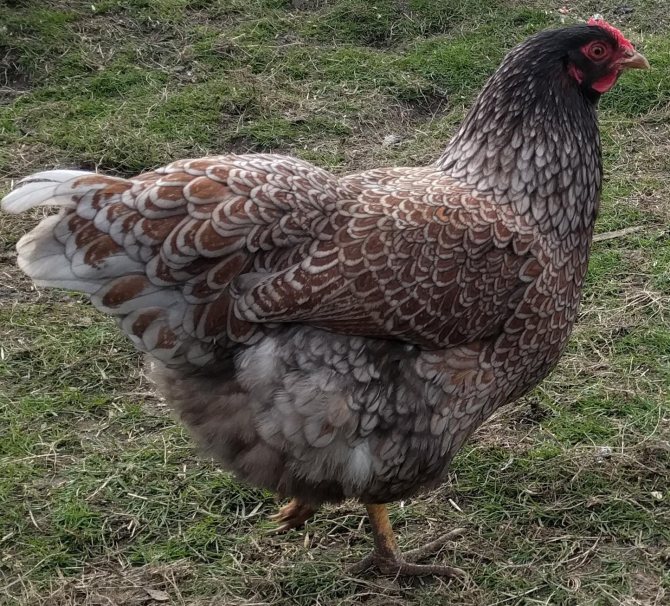

Conditions of detention
The room where the birds will live must be dry. Ceiling height 2 meters. A prerequisite is good ventilation. Eliminate drafts and high humidity.


If the chicken coop is built separately, then it should be located on a hill and on the south side of the building. This arrangement will save the room from northern winds and water inflow during rains and melt water runoff. When erecting a columnar foundation, you can solve this problem.
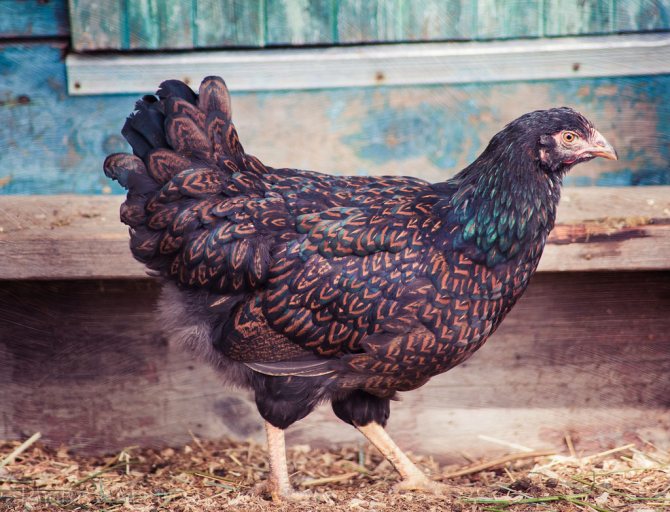

The material for construction can be different: timber, brick, cinder blocks. But there are some nuances. Wooden buildings do not need to be heated in winter, while cinder block and brick buildings require heating or careful wall insulation.
The optimum temperature for chickens is 18-25 degrees C.
The size of the chicken coop depends on the number of birds. To make Barnevelder chickens feel free, one square meter. m. to place 3-5 pieces. Don't forget about future growth.
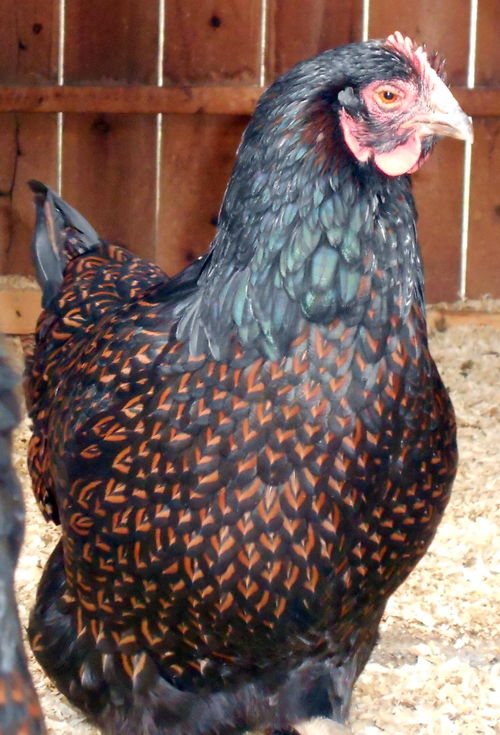

The floor is preferable from clay, it warms up better. Lay the bedding on top. It can be sawdust, sand, shavings - 15 kg per individual per year.
Cut windows on the south side, because Barnevelder chickens love light. Especially those that are raised as layers.
Reference: laying hens require consecration 17 hours a day. Artificial lighting is required.
The Barnevelder chicken manhole is provided during the construction of the walls - 20 cm from the base. Attach a vestibule near it and equip doors.
For walking, attach a large courtyard adjacent to the chicken coop. The height of the fence is 2.2 meters. Since the Barnevelder chicken breed easily takes up barriers of 2 m.And a canopy will help protect chickens during hot weather.


Beautiful chicken Barnevelder with chickens.
Inside the chicken coop, it is necessary to install drinkers, feeders from any material, but make a closed top so that the chickens do not climb inside and do not scatter food.
You also need to separately adapt the feeder for shells, chalk. Install a box 50x50 cm and pour sand and ash into it. Barnevelder chickens will definitely use it for taking dry baths and thereby protect themselves from parasites.
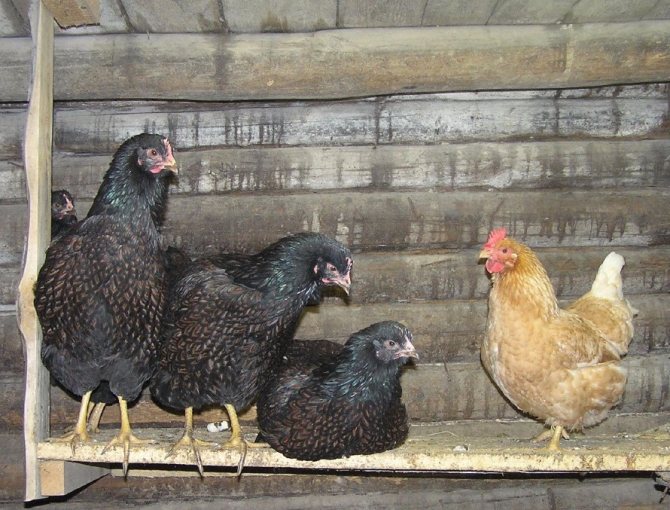

At a height of one meter from the base, perches with a diameter of 5 cm, and a step of 30-35 cm, are arranged.
Place the nests in a dark place. Pour sawdust, straw, seed husks, fluff into them.
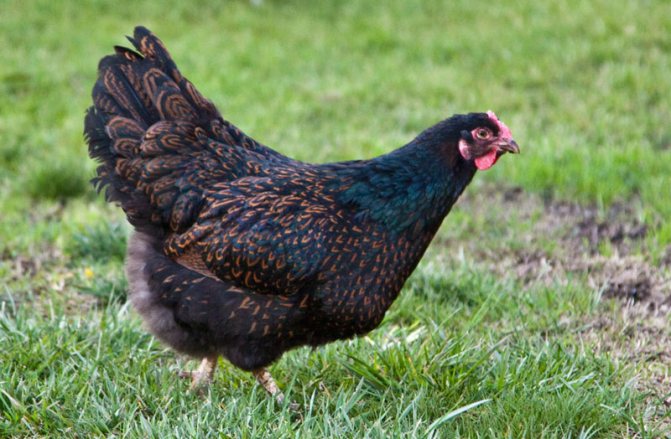

The diet
Barnevelders are birds that are unpretentious in food, but given that they are fed with compound feed at home, you should start with it and gradually add chopped boiled eggs, corn flour, grain, cottage cheese.
Some manufacturers focus on certain elements in compound feed:
- vitamin (trace elements, vegetable vitamins);
- carbohydrate (wheat, oats, millet);
- protein (vegetable basis).
To obtain a complete and balanced feed, three varieties should be mixed.
The daily dose of one chicken is from 75 to 150 g. It is advisable to feed the birds at the same time - in the morning (from 8.00 to 9.00) and in the evening (from 16.00 to 17.00).
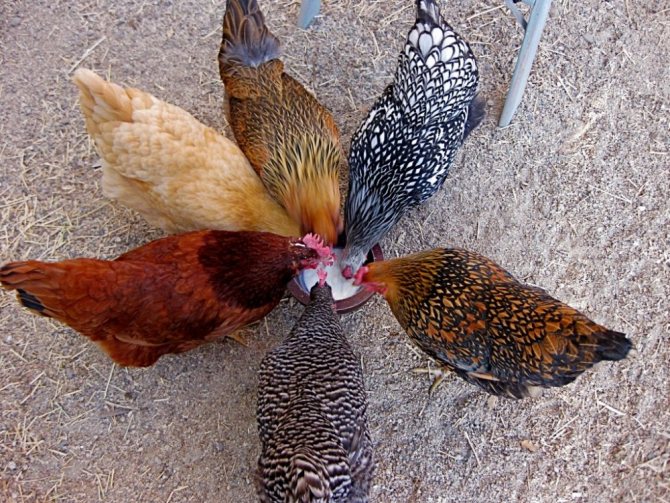

When converting Barnevelder chickens to organic foods, they should receive 60% grain food.
There are not enough minerals in food, you should give top dressing in the form of eggshells, hydrated lime, shells, chalk.
Plant proteins will replenish the body with protein - nettle, flour, yeast, legumes.
To prepare a yeast supplement, dilute 30 g of the fresh component in 3 liters of water. Leave to ferment in a warm place for 8 hours, then give at the rate of 15 g per day.
Animal fats are found in bone meal, fish meal, and cottage cheese.
Do not overfeed with fishmeal. The eggs will taste bad.
To maintain immunity, food rich in carbohydrates is useful. Vegetables (root crops, potatoes), cereals (corn, millet, oats, sorghum, barley).
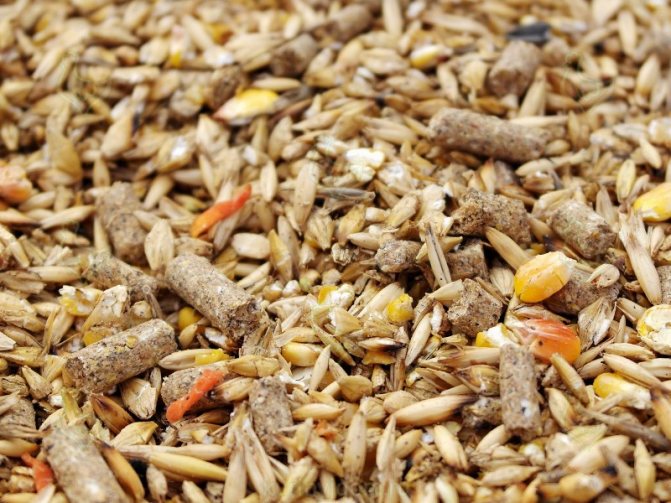

To increase the content of vitamin E and B, cereals are germinated:
- Take barley and wheat in equal proportions, add 3% peas for taste.
- Pour water 2 cm higher than the grain mixture.
- After 12 hours, drain off excess liquid and transfer contents to a bag.
- Lay out the bag on the surface, lying down, so that the layer thickness is 5 cm.
- In two days from the moment of pouring water, the grain will be ready for use.
Chickens Barnevelder give grain one hour before turning off the lights in the evening. Pour feed onto the bedding.
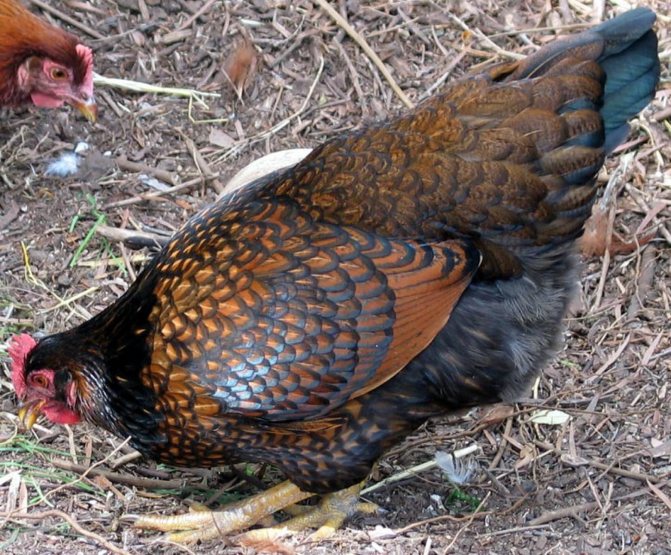

How to breed
There are several ways to breed the Barnevelder chicken breed:
- Buy eggs and bring out the younger generation with the help of an incubator.
- Incubate eggs from your own hens with the help of a brood hen.
- Purchase ready-made young growth.
Video: Barnevelder chickens.
Barnevelder chickens are considered good mothers, they hatch their future chickens well. This has a positive effect on the survival rate of the offspring and is 95%. Chickens brought from another region require vaccination in order to better adapt.
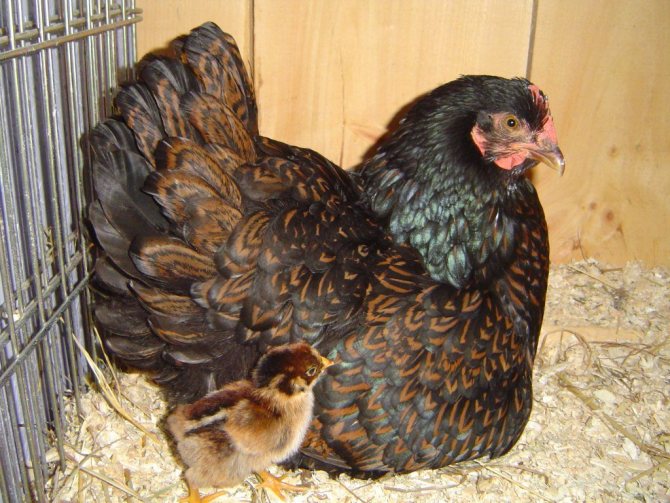

Young growth in the first week is kept at a temperature of 35 degrees C. Then the temperature is slowly reduced. The first two days the consecration is round the clock.
After birth, they feed with a chopped boiled egg, on the second day, supplements in the form of millet, nettle, vegetables, and cottage cheese are relied on.
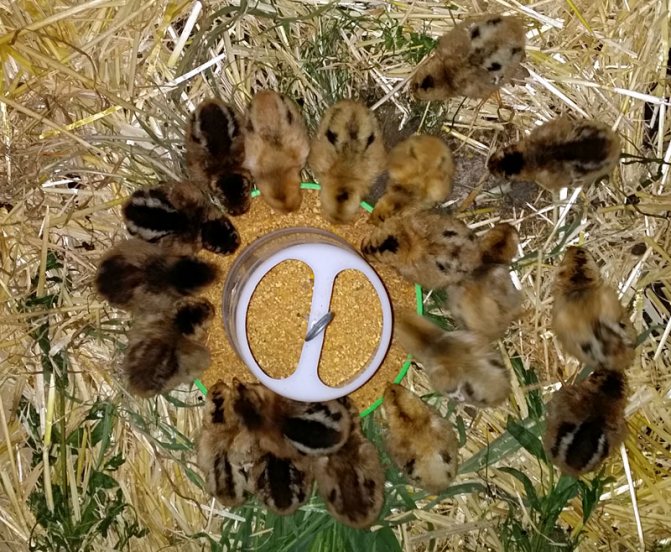

Breeding subtleties
Poultry farmers dealing with the Barnevelder breed speak of good livestock survival. The incubation material can be transported for a long time under the proper conditions. From purchased eggs, chicks hatch 76-91%, and if the eggs are obtained on their own farm, then the figure exceeds 95%. It is important to be aware that the shells are strong enough to sometimes cause problems with hatching. The percentage of fertilized eggs is approximately 80%.
If chickens are properly fed and maintained, then they do not cause problems for their owners. It is preferable to use compound feed for young animals as the main ration. Feathers appear very early, and from that moment crushed oatmeal is introduced. To avoid pecking, it is a good idea to place a container of wood ash or mix a sulfur supplement with the feed.It is recommended to introduce such additives at the time of transition from the compound feed "Start" to an older feed or at the time of molt.
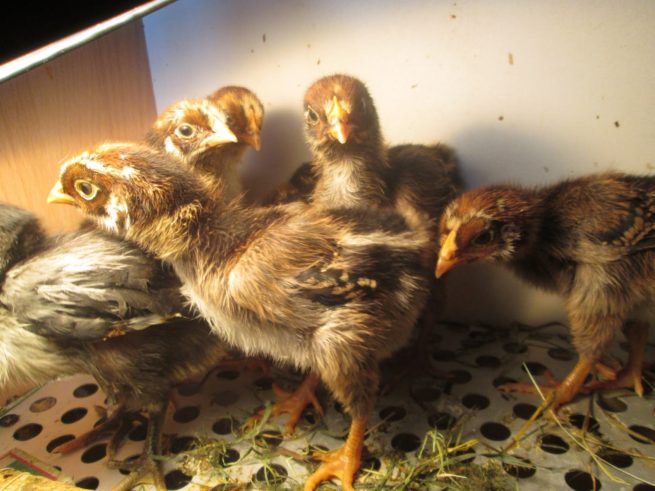

At two weeks of age, the body of young animals is considered to be strong and coccidiosis is prevented with special drugs.
An adult bird can be released to a walking area, where it will happily eat green grass and various insects, and can also eat vegetables. The Barnevelder breed is distinguished by a calm character, a little curiosity, and besides, chickens are easy to tame.
Birds prefer to spend the night on heights, they can choose trees. The breed is considered frost-resistant, but at the same time in the room it is necessary to maintain a temperature of at least +5 degrees.
If the frost is small, then the chickens can be released for walks. When installing additional lighting in the hen house from chickens, eggs can be obtained even with a reduction in daylight hours. One egg weighs on average about 60 grams, however, if improperly fed, the birds begin to fatten, which increases the weight of egg products (80 grams), but at the same time the cloaca floats with fat. This leads to deaths among chickens, they cannot spread. It is not recommended to leave feeders filled with food freely available.
Diseases and prevention
Vaccinations can help reduce the likelihood of illness. Barnevelders love mobility, if limiting the living space in chickens can atrophy the muscles of the legs and lead to joint disease.


Improper maintenance of Barnevelder chickens leads to parasitic diseases, and a lack of vitamins in food leads to hypovitaminosis. Avitaminosis appears in extreme cases when vitamins are completely absent.
Diseases can be prevented by performing preventive actions:
- vaccinate in a timely manner;
- to keep clean;
- drink clean water;
- build a spacious walking area.


Advantages and disadvantages
The Barnevelder chicken breed has gained popularity among farmers and is renowned for its good reviews in the poultry industry. This is due to several advantages that set them apart from other breeds:
- simple way of content;
- perfectly adapt to new conditions;
- high egg production;
- terracotta color of eggs;
- maternal instinct is on top;
- unique color;
- fast weight gain;
- survival rate 95%;
- universal use of the breed;
- safely tolerate low temperatures;
- calm and friendly character.


Disadvantages:
- too active chickens and require spacious areas for walking.


Chickens of the Barnevelder breed are very beautiful birds. Their decorativeness allows them to participate in exhibitions with them and take first places. In addition, they are excellent layers, good hens. If desired, it can be bred for meat, as it quickly gains weight.
According to the description of the farmers, the Barnevelder chicken breed has many positive differences, this confirms their real experience and numerous reviews.
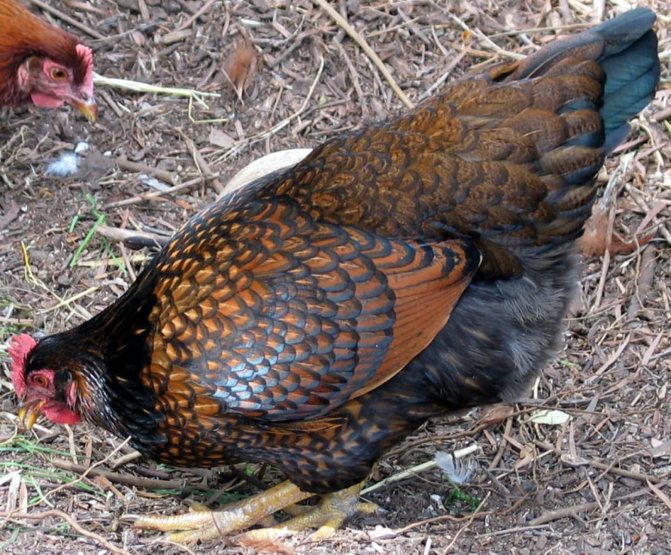

Photo of a Barnevelder chicken.
Replacing the herd
The lifespan of thoroughbred chickens is 6-7 years. However, the individual is not kept for so long, because after two years of life, its productivity drops sharply. Eggs are poorly fertilized, egg production drops to 100 pieces per year. Moreover, old chickens are more likely to get sick with those diseases that cannot be cured. If the individual is not slaughtered in time, then the quality of the meat can also be lost. Two-year-old chickens are slaughtered, and their generation is replaced by young stock from freshly raised chickens. Males are productive for the first 1-2 years, then they are also changed.
Note!
Only purebred individuals are suitable for breeding, the exterior of which coincides with the standards.
However, it is not uncommon for pullets to reveal deviations (defects) from the standards. These include:
- disproportionate (too high or low) body fit;
- Narrow chest;
- the presence of a white tint on the earlobes;
- feathered paws;
- tail with scanty plumage;
- poorly developed belly.
If these deviations are detected, the individual is discarded. It is left to receive an edible egg or slaughtered for meat. In any case, it cannot be left to the tribe.
The cost
Barnevelders are rare in Russia. The price of Dutch chickens is quite high, but this does not bother enthusiastic poultry farmers, because purebred birds will become the main decoration of the yard, and you can also get healthy and tasty products from them. The price for an adult on the market ranges from 1000-1200 rubles. For an incubation egg, they ask for 150 rubles. A cockerel who is 180 days old will cost 1,500 rubles.







